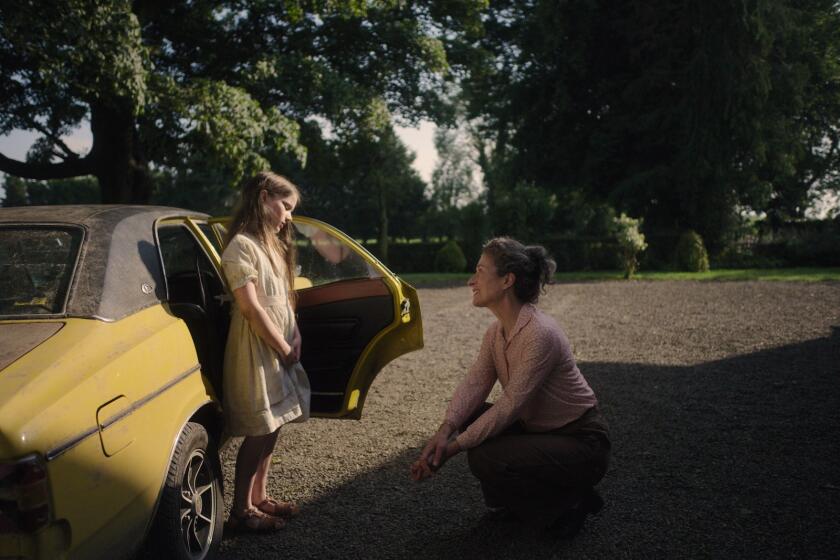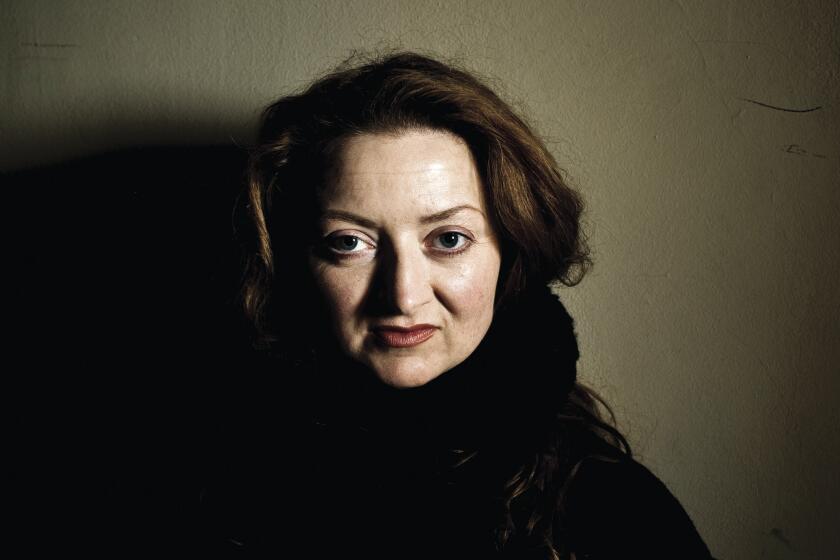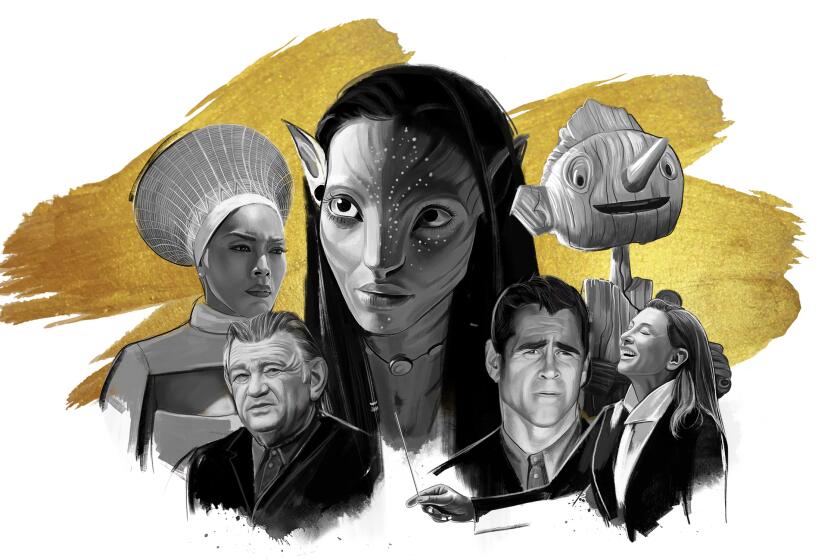The Irish language once provoked ‘strong resistance.’ Now it has a place at the Oscars
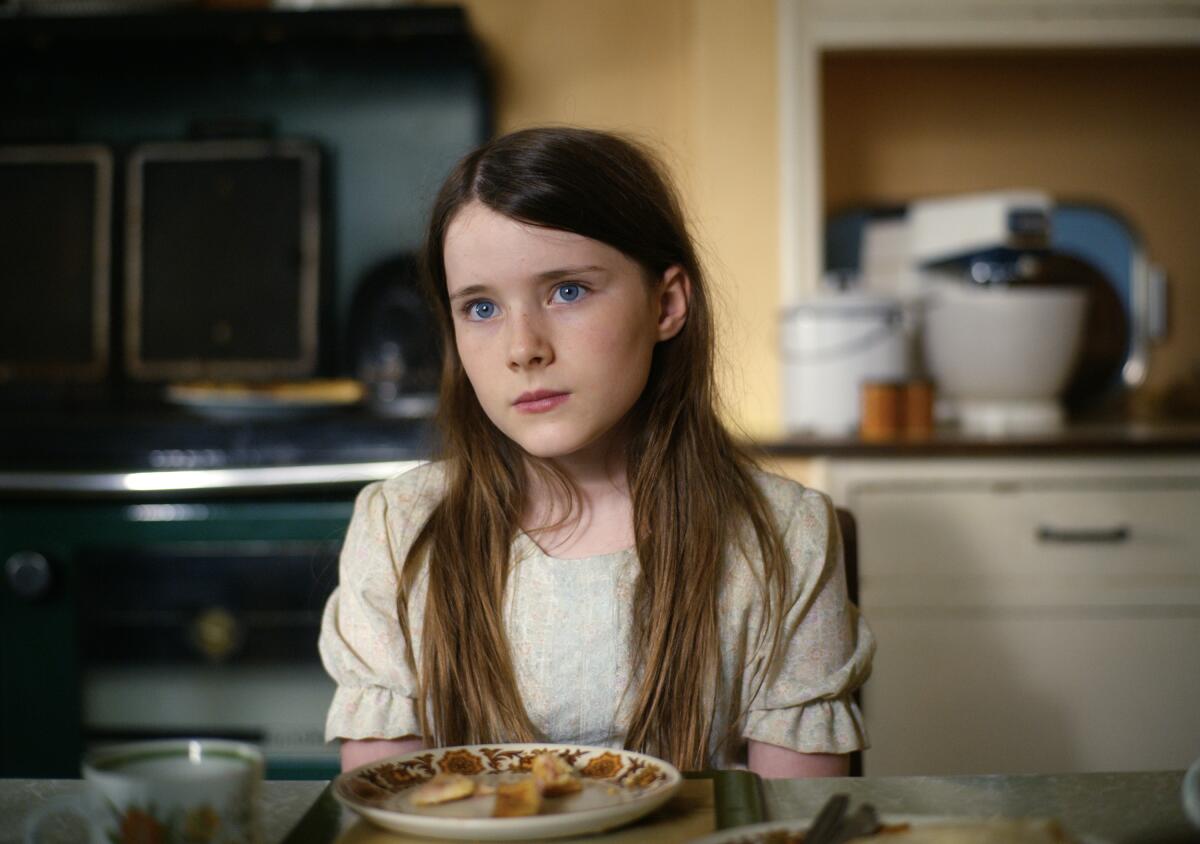
“For any language to survive, it has to be culturally present.”
That’s how Colm Bairéad, whose devastating first feature, “The Quiet Girl” (An Cailín Ciúin), is the first Irish-language production to be nominated for the Oscar for international feature, explains the significance of Ireland’s native tongue being represented in cinema. It’s an occasion that has stirred the already deep sense of national pride among Irish people, whether they speak the language or not.
Adapted from the novella “Foster” by Irish author Claire Keegan, Bairéad’s softhearted debut, in theaters Friday, centers an intuitive 9-year-old girl from a poor family spending the summer of 1981 with relatives — a married couple, who have experienced a personal tragedy.
While spoken fluently by a small percentage of the country’s population, mostly in rural areas, the Irish language is still taught in all schools today, and its preservation remains a cornerstone of the postcolonial Irish state. Until recently, however, the language had been underrepresented in local film output.
“The Quiet Girl” was developed and later brought to fruition through Cine4, an initiative specifically designed to produce Irish-language features for theatrical exhibition. Funding comes from TG4, the Irish-language broadcaster established in 1996; Screen Ireland, the state film agency; and the Broadcasting Authority of Ireland. The goal is to help mainstream the Irish language through the reach of a medium like film.
The rare Irish-language film released in the U.S., ‘The Quiet Girl,’ based on Claire Keegan’s ‘Foster,’ tells a poignant story about a neglected girl sent to live with distant relatives for a summer.
“When we set up this scheme, on day one I said in interviews that the aim would be to one day have an Oscar nomination for an Irish-language film,” said Alan Esslemont, director general at TG4. “We wanted to let people know this is a scheme with ambition.”
Since 2017, Cine4 has supported two Irish-language projects per year, each with a budget of around 1.2 million euros (about $1.27 million).
Six films have been completed so far, including the period drama “Arracht,” set during the Great Famine that decimated the Irish population in the 19th century; and two present-day narratives, the dark coming-of-age story “Foscadh” and the lighthearted dramedy “Róise & Frank.”
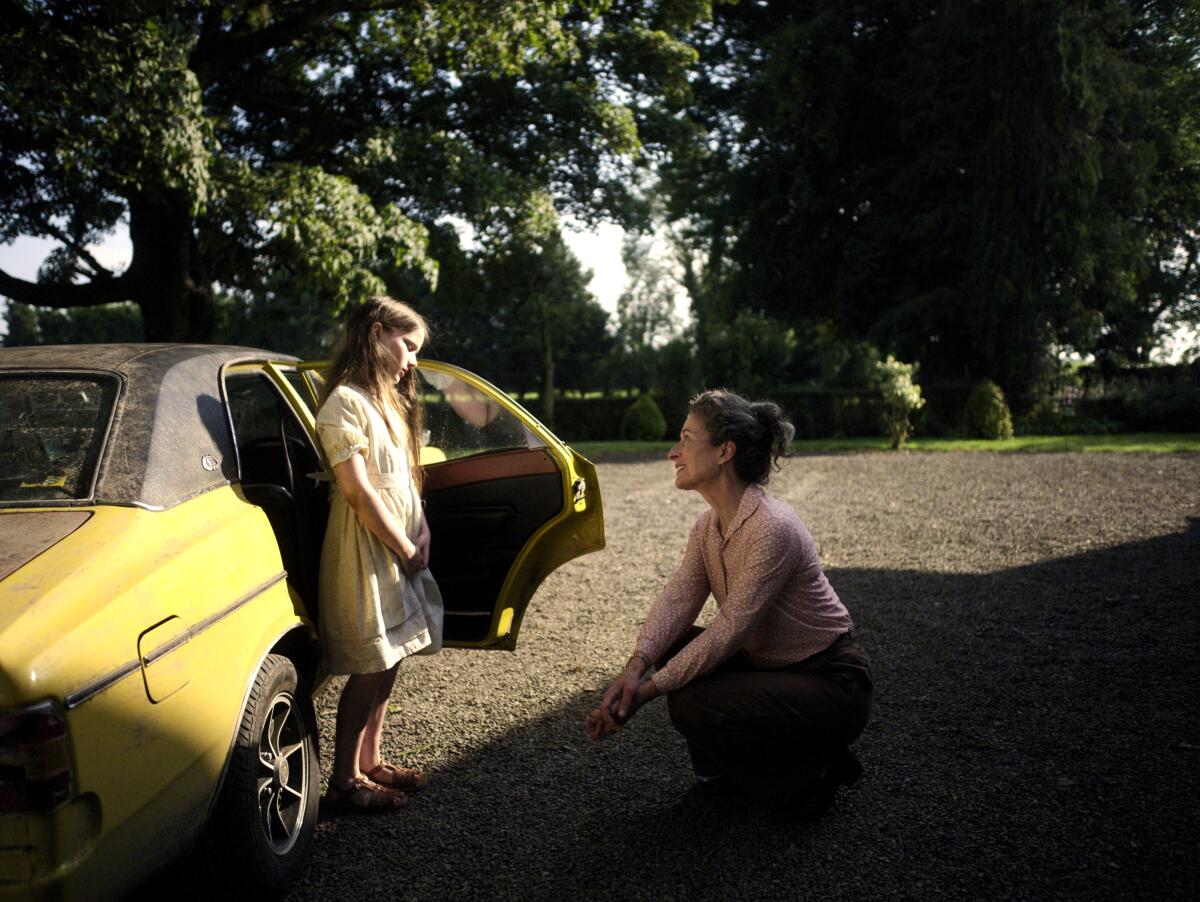
Bairéad and his producer and wife, Cleona Ní Chrualaoí, had collaborated with TG4 on short-format content and documentaries in the Irish language over the years. The creation of Cine4 was a tailor-made opportunity for them to graduate to big-screen ventures.
Raised bilingually, Bairéad has a deep personal connection to the Irish language, even if as a teenager he resisted it. “My dad has never spoken English to me,” he said. “Even though I grew up in Dublin, in an ordinary suburban housing estate, we were slightly different as a family because we had this language that other people around us weren’t speaking.”
As he got older, the filmmaker came to appreciate the cultural relevance of the language, and now he and Ní Chrualaoí are raising their two children with the Irish language.
Irish author Claire Keegan is one of those U.S. ‘discoveries’ who have been known back home for years. With ‘Foster,’ she earns that acclaim and more.
Although “Foster” was originally written and published in English — to be precise, Hiberno-English, the dialect spoken in Ireland that features inflections and syntax derived from Irish — Bairéad believed that since Keegan’s story takes place entirely on two farms, he could transplant the action to an Irish-speaking region, and it would still seem believable to homegrown viewers.
“When creating in the Irish language, I’m always very conscious that the language needs to be presented in a manner that feels authentic to an Irish audience,” said Bairéad. “I would never write a script based in Dublin where everyone is speaking Irish for no reason.”
Contrary to what one might expect, Bairéad says casting the extraordinary Catherine Clinch in the lead role of Cáit was easier than finding professional adult actors fluent in Irish. Searching for their young star entailed a seven-month process, but the pool of young Irish-speaking talent was plentiful.
In addition to all schools in Ireland teaching the Irish language as a mandatory subject, there is a smaller subset of grade schools across the island nation that teach students every subject in the Irish language. Bairéad came across Clinch at one such school in Dublin.
Growing up, Bairéad also attended an Irish-language-only schools, specifically the one that his father established in their community. Although Bairéad’s father, a linguist, mastered Irish later in life, his love of Irish culture and languages inspired him to be part of an upsurge in Irish-language activism in the 1970s that led to the creation of the Irish-language-only schools.
“This film is a product of people like my father who dedicated themselves to trying to preserve the language and find new ways to promote it,” he said. “He had a clear-eyed sense that this is worth preserving, that it would be a tragedy if it was to be lost.”
Controversial Irish emcees Móglaí Bap and Mo Chara and DJ Próvaí came to L.A. for the first time with something to prove — and let the fiery rhymes in their native tongue do all the talking.
It was also during the 1970s that Bairéad’s father taught Irish to Brendan Gleeson — yes, that Brendan Gleeson, now the Oscar-nominated star of “The Banshees of Inisherin,” who was then preparing to become a teacher, which required proficiency in the Irish language. Gleeson has advocated for the language ever since.
“The Irish language can express nuances of the Irish perspective lost even to Hiberno-English,” said Gleeson via email. “For that alone it is a gift.”
Gleeson, who voiced the father character in both the English and Irish-language dub of the Oscar-nominated Irish animated feature “Song of the Sea,” agrees that Bairéad made the right decision adapting “Foster” into Irish.
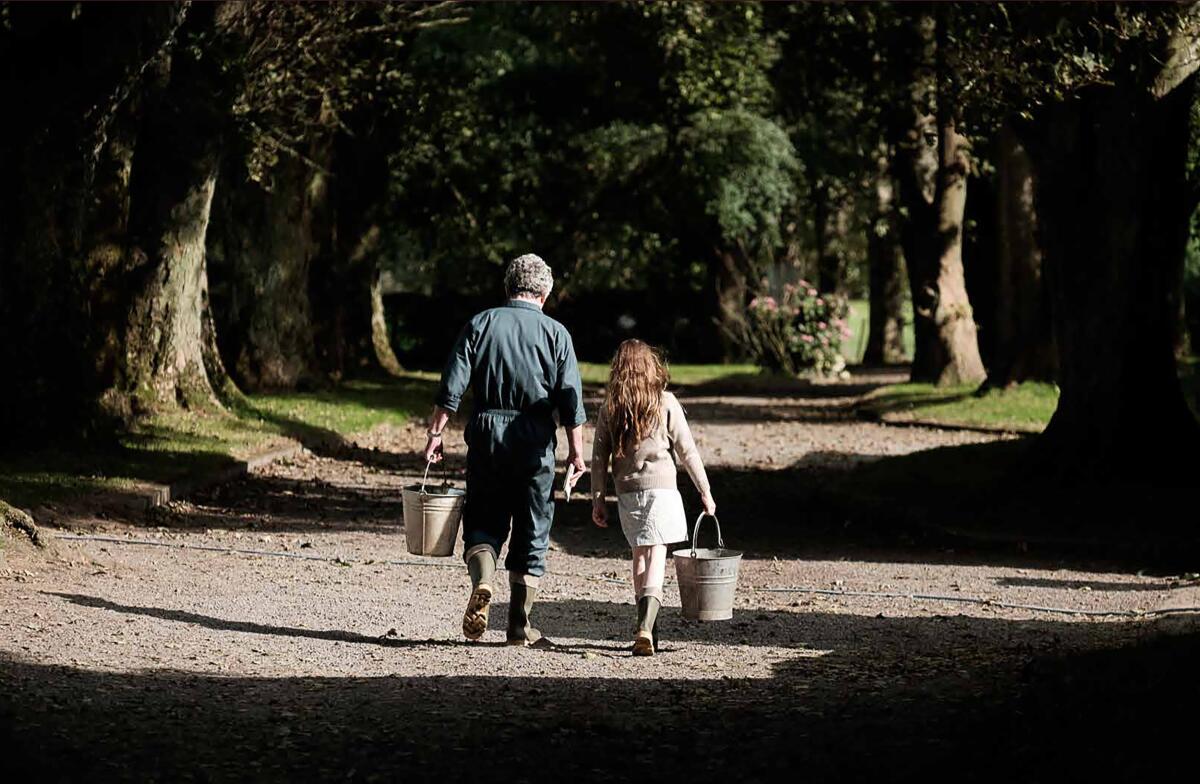
“’The Quiet Girl’ takes a beautifully written Hiberno-English novella and gives it cinematic expression through Irish. That is the interplay of two living languages,” added Gleeson. “The irony is that much of the film’s power is achieved through silence.”
Before the implementation of Cine4, only a handful of Irish-language fiction films had ever graced the country’s screens. The 1978 crime drama “Poitín” by Bob Quinn is considered the first of its kind. Quinn intentionally made it in Irish as a way to reclaim the notion of an untainted, true Irish identity in the Connemara region of the west of Ireland, away from bourgeois life.
But as Trinity College Dublin film studies professor Ruth Barton notes, Quinn’s political statement doesn’t reflect most Irish people’s relationship to the language. Many generations associated the Irish language with the poverty of pastoral life because of the manner in which it was taught to them in school.
Here are the nominees for the 2023 Academy Awards in all categories, announced live Tuesday from the Samuel Goldwyn Theatre in Beverly Hills.
“People in my generation were obliged to learn Irish. You couldn’t pass your final school exam if you failed Irish,” said Barton. “There was this strong resistance to learning Irish because it had been imposed on them, and also because the standard textbook, called ‘Peig,’ was all about growing up poor in Ireland having a miserable life. It’s only now that there is more of a slightly cultural turn and many people want to voluntarily learn Irish.”
It took several decades after “Poitín” for another Irish-language production to emerge: 2007’s “Kings,” about a group of men from Connemara who migrate to London. More recently, there was “Song of Granite” (2017), a black-and-white period biopic about a traditional singer, and the period thriller “Black 47” (2018), also set in the Great Famine; both were made outside of the Cine4 initiative.
In total, there are still fewer than a dozen fiction features in the Irish language in existence, more than half thanks to the Cine4 funding program.
“Everybody feels very positive about this current batch of Irish-language films because they’re not ramming Irish down anybody’s throat,” said Barton about the Cine4 films. “They’re not saying, ‘This is the way you have to live.’ You can live in Dublin and speak Irish.”
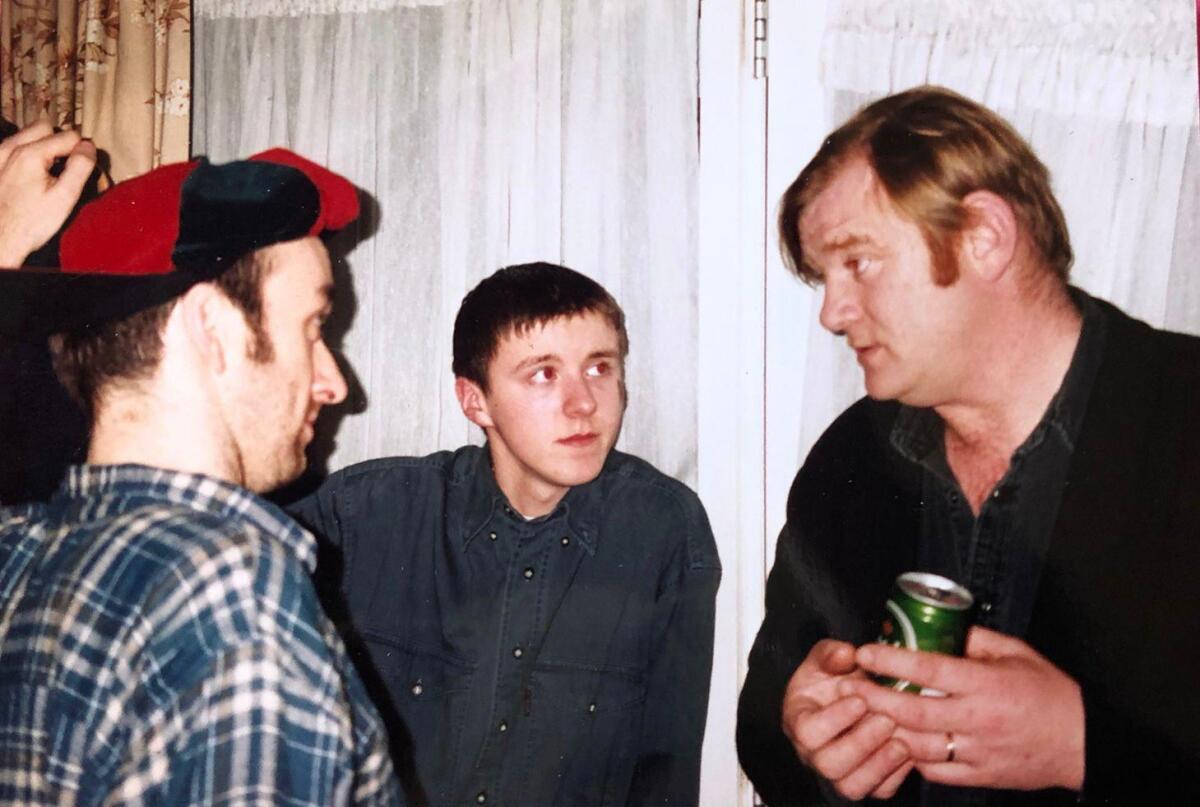
The Oscar nomination is not “The Quiet Girl’s” first historic accomplishment: The film is the highest-grossing Irish-language film of all time, the first to world premiere at the Berlin International Film Festival — where it won the Grand Prix in its section — the first to open the Dublin Film Festival and the first to sweep the Irish Film & Television Academy Awards, where it nabbed seven prizes including best film.
Beloved source material, enthusiastic word-of-mouth and international recognition contributed to the film’s unprecedented impact and visibility. Over the course of its awards campaign, “The Quiet Girl” also earned support from notable Irish actors including Pierce Brosnan, Chris O’Dowd, Caitríona Balfe and Michael Fassbender, some of whom hosted screenings. By the time the Oscar nominations announcement came last month, there was great anticipation among Irish people on social media.
“The tie between the Irish language and the glitz and glamour of Hollywood was something that people really couldn’t have imagined, so it’s had a huge impact on the status of the language in Ireland, and that’s what we were setting out to do,” said Esslemont.
The marvelous success of “The Quiet Girl” has begun to positively affect how the language is perceived locally, which Bairéad hopes means a long life for the Cine4 initiative and the continued support of Irish-language storytelling from both institutions and audiences alike.
“Hopefully in 20 years’ time, my own kids will be able to look back on this new canon of Irish-language cinema and have something there that they can engage with and appreciate in their own indigenous language,” said Bairéad.
More to Read
Only good movies
Get the Indie Focus newsletter, Mark Olsen's weekly guide to the world of cinema.
You may occasionally receive promotional content from the Los Angeles Times.
